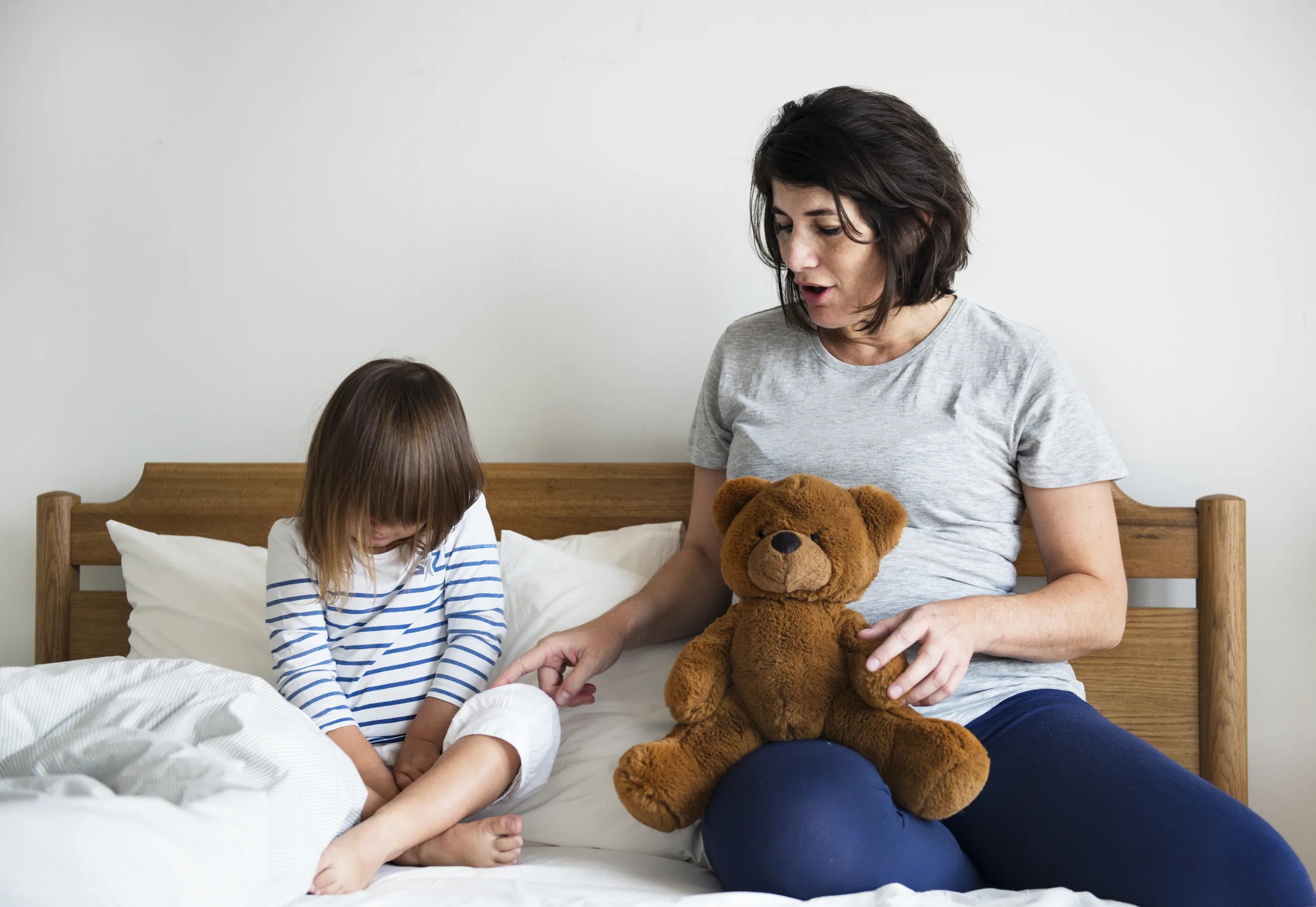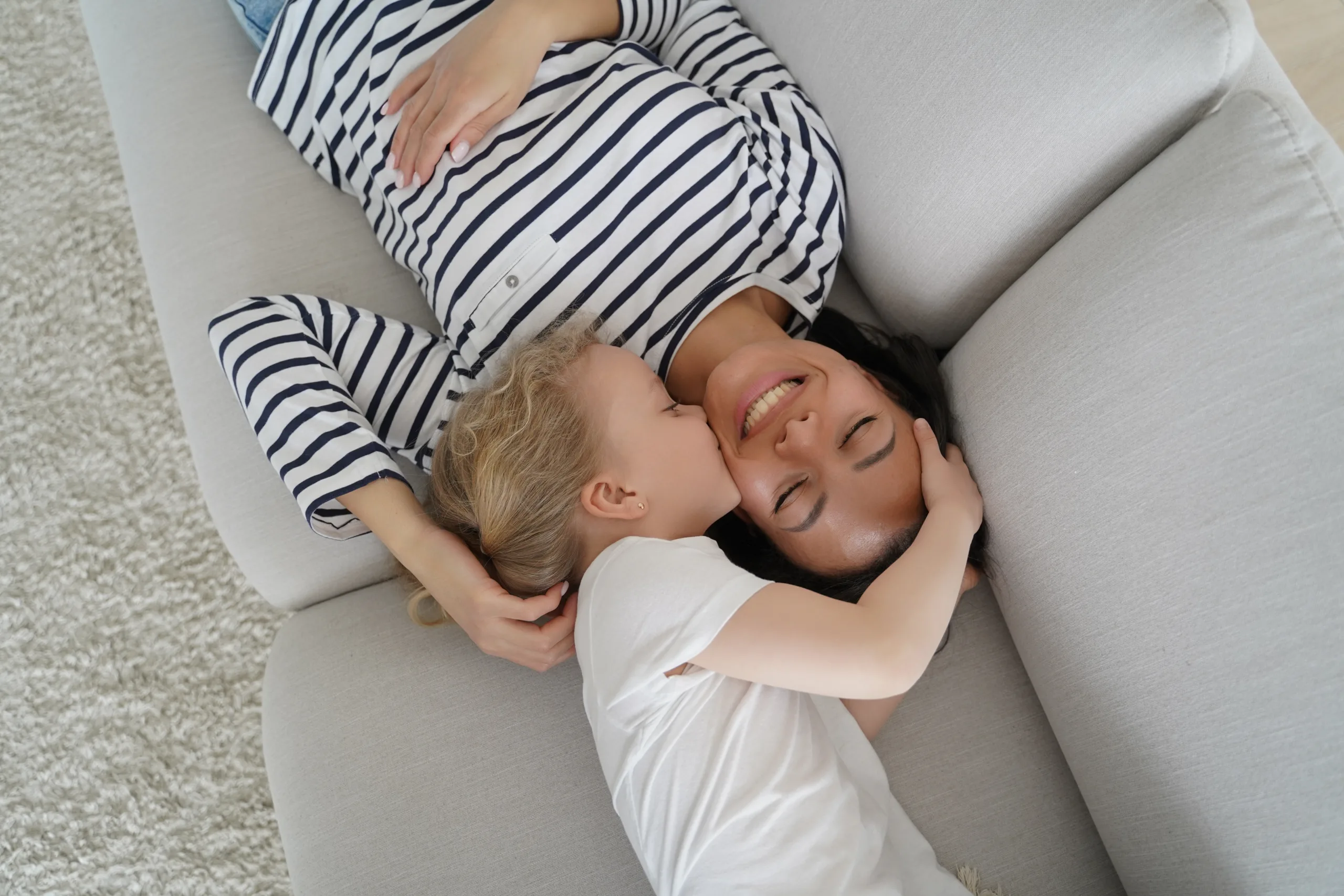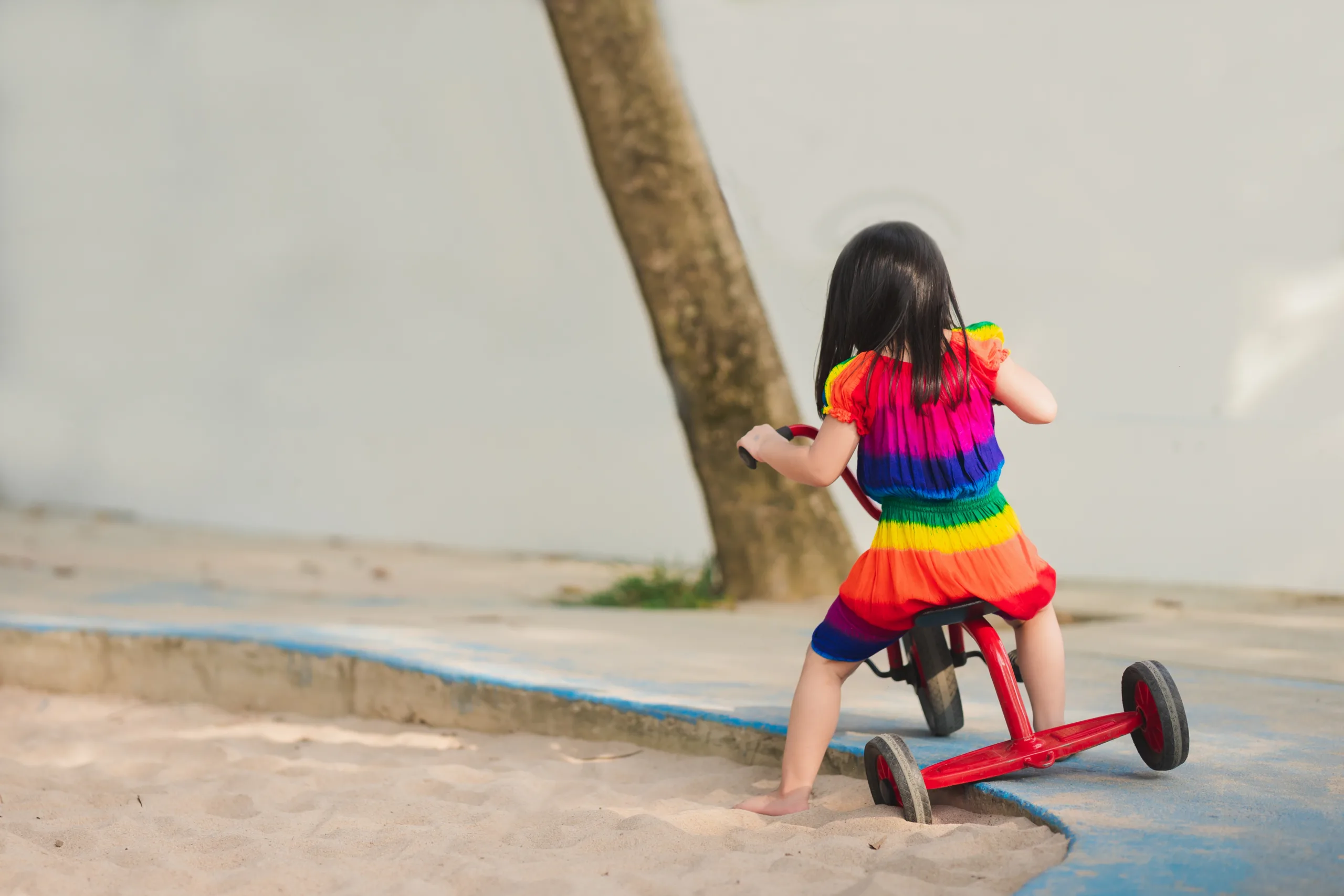Raising Resilient Kids: Unlocking The Secrets Of Positive Discipline 101
Are you a parent who wants to raise resilient kids? Do you want to unlock the secrets of positive discipline and help your children thrive in life? Look no further than this article.
Here, we will explore how positive discipline can benefit your child’s growth and development, as well as provide tips for implementing these techniques in your daily routine.
Positive discipline is a parenting approach that focuses on teaching, guiding, and redirecting resilient kids behavior through empathy, respect, and communication. Unlike traditional methods of punishment or rewards, positive discipline emphasizes mutual cooperation between parents and children to create a safe and supportive environment where children can learn from their mistakes.
By fostering strong relationships with their parents based on trust and understanding, children can develop self-discipline skills that will serve them well throughout their lives. So let’s dive into the key principles of positive discipline and discover how they can help you raise resilient kids.

Understanding Positive Discipline
Get to grips with the principles of good discipline by understanding how it works. Positive discipline is all about helping your child develop self-control, responsibility, and problem-solving skills in a non-punitive way and teach them how to be resilient kids.
It emphasizes the importance of empathy towards your child’s feelings and needs, while also setting clear boundaries and expectations. Rather than punishing bad behavior, positive discipline focuses on teaching your child new skills that will help them make better choices in the future.

This approach helps build trust and respect between parent and child, creating a nurturing connection that can weather any challenges that come their way. By understanding these key principles of positive discipline, you’ll be able to create a loving and supportive environment for your child to grow and thrive in.
Key Principles of Positive Discipline
If you want to raise resilient kids, it’s important to understand the key principles of positive discipline.
Three of these principles include building connection and trust, encouraging cooperation and collaboration, and providing choices and consequences.
By focusing on these elements, you can create a supportive environment that fosters growth and development in your children.
As you explore these principles further, keep in mind that positive discipline requires patience, consistency, and a willingness to adapt as your child grows and changes.
Building Connection and Trust
To build a strong relationship with your child, focus on fostering connection and trust through consistent communication and quality time together.
Building strong relationships is critical for children to develop emotional intelligence and learn how to navigate their own emotions as well as those of others. Studies show that children who feel connected to their parents experience better mental health outcomes, including higher self-esteem and greater resilience when faced with challenges.

Make an effort to spend one-on-one time with your child regularly, whether it’s going for a walk or having a game night at home. Use this time to truly listen and engage with your child, showing them that you value their thoughts and feelings.
By prioritizing connection and trust in your relationship with your child, you’re laying the foundation for positive discipline strategies that’ll encourage cooperation and collaboration in the future.
Encouraging Cooperation and Collaboration
You can foster a stronger relationship with your child by encouraging cooperation and collaboration. By working together, you can teach them teamwork skills that will be valuable throughout their lives.
Creating opportunities for your child to work with others towards a common goal helps them develop empathy, communication, and conflict resolution skills.
Encouraging cooperation also means giving your child a voice in decision-making processes. This can help build trust and respect between you and your child, as they feel heard, valued and honed them as resilient kids.
By involving them in decisions that affect them, you give them agency over their own lives while also teaching the importance of compromise and negotiation. These are all crucial skills that will serve your child well in relationships both personal and professional.
As you continue to build connection through collaboration, you can move onto providing choices and consequences without the need for punishment or reward-based discipline techniques.
Providing Choices and Consequences
Providing choices and consequences is a crucial aspect of parenting that can help children develop decision-making skills and understand the natural outcomes of their actions. By empowering decision-making, parents allow their children to make choices within clear boundaries. This way, you can raise resilient kids. They will learn how to take responsibility for their decisions while still feeling like they have some control over their lives.
When it comes to consequences, it’s essential to choose ones that are related to the behavior in question and teach a valuable lesson. Natural consequences work best because they allow to raise resilient kids to experience the real-life results of their actions without feeling punished. For example, if your child refuses to wear a coat on a chilly day, they will feel cold outside. They’ll learn that wearing appropriate clothing is necessary for staying comfortable and healthy.
By empowering your child’s decision-making abilities and using natural consequences as teaching tools, you can help them become more resilient individuals who understand the importance of making good choices.

Applying positive discipline techniques goes beyond just providing choices and consequences. Stay tuned for our next section where we’ll explore other ways parents can foster resilience in their children through positive discipline practices.
Applying Positive Discipline Techniques
When using positive discipline techniques, it’s crucial to remain calm and collected while addressing the child’s behavior. It’s important to emphasize the behavior rather than the child because research shows that children who receive criticism are more likely to develop anxiety. Instead, use positive reinforcement as a way of encouraging good behavior.
Effective communication is key, as it helps create an environment where your child feels safe and heard. Avoid using negative language or punishment since they may cause more harm than good.
By applying positive discipline techniques, you are giving your child a sense of control over their actions and in turn building their self-esteem. Positive reinforcement encourages to raise resilient kids to take responsibility for their actions, which ultimately leads to them becoming more resilient individuals who can handle life’s challenges with grace and confidence.
In the upcoming section about ‘benefits of positive discipline,’ we’ll explore how these techniques can help shape your child into a confident and well-adjusted individual who is capable of dealing with life’s ups and downs in a healthy manner.
Benefits of Positive Discipline
When it comes to raising resilient kids, you want them to have good behavior, and a positive relationship with you.
Positive discipline techniques can help you achieve all of these goals. By using this approach, you can able to raise resilient kids, improve your parent-child relationship, and reduce behavioral issues that may arise along the way.
Developing Resilient Kids
Fostering resilience in children requires intentional effort and a focus on developing their ability to adapt and overcome challenges. This means providing them with opportunities to learn from mistakes, encouraging them to take risks, and teaching them how to cope with setbacks. Resilience in childhood is an essential trait that can help children become more independent and confident adults.
Here are some ways you can develop resilient kids:
– Encourage problem-solving: When your child faces a challenge, avoid solving the problem for them. Instead, ask open-ended questions that can help guide them towards finding a solution.
– Teach emotional regulation: Help your child understand and manage their emotions by modeling healthy coping mechanisms and validating their feelings.
– Foster autonomy: Allow your child to make decisions appropriate for their age and praise their efforts regardless of the outcome.

By taking these steps, you can help your child to be resilient kids have a growth mindset and face life’s challenges with confidence. Remember that building resilience takes time, so be patient as your child learns how to overcome obstacles.
As you work on developing resilient kids, it’s also important to think about improving parent-child relationships. By strengthening this bond, you can create a safe space where your child feels comfortable seeking guidance when needed.
In the next section, we’ll explore some ways you can improve communication with your child while still maintaining positive discipline techniques.
Improving Parent-Child Relationships
Improve your bond with your child and create a safe space for open communication with these helpful techniques. Effective communication is key in building a strong relationship with your child. It’s important to take the time to listen actively and respond thoughtfully to their concerns, opinions, and ideas.
Allow them to express themselves without interruption or judgment, validating their feelings and experiences. By doing so, you’re showing them that they can trust you and that their thoughts matter.
Building empathy is also crucial in improving parent-child relationships. Try putting yourself in your child’s shoes when they come to you with a problem or situation. Ask questions about how they feel rather than jumping straight into problem-solving mode. This will help them feel heard and understood, strengthening your bond even more.
Remember that each interaction is an opportunity to connect on a deeper level with your child. By improving communication skills and building empathy, you’ll be better equipped to reduce behavioral issues in the next section without even realizing it!
Reducing Behavioral Issues
Let’s tackle how to cut down on problem behaviors and create a more peaceful home environment. One effective way to raise resilient kids is to do this is through behavioral modification. The idea behind it is that by consistently reinforcing positive behavior, you can reduce negative behavior over time. It’s important to remember that this process takes patience and time, but the results are well worth it.
To start, identify the behaviors you want to change and set clear expectations for your child. For example, if your child has a habit of interrupting conversations, explain why interrupting is not polite and establish a rule that they must wait their turn to speak.
When your child follows this rule, praise them immediately with specific feedback such as ‘I appreciate how patient you were waiting for your turn to talk. Consistent reinforcement helps the child understand what behaviors are expected of them and encourages them to continue exhibiting those behaviors in the future.
Reducing negative behavior at home requires effort and commitment from both parents and children. While behavioral modification can be challenging at times, there are plenty of tips and tricks that can help make the process easier.
So let’s dive into some challenges and tips for implementing positive discipline in your home!
Challenges and Tips for Implementing Positive Discipline
Navigating the obstacles of implementing effective discipline techniques can be tough, but with persistence and patience, parents can create a nurturing environment for their children to thrive in.
Here are some challenges you may face when implementing positive discipline:
– Resistance from your child: Your child may not immediately respond positively to your new approach to discipline. They might even push back against it, feeling like they’re losing control or being punished unfairly. However, it’s important to stay consistent and patient. Over time, your child will come to understand that this new way of disciplining is better for them and the family as a whole.
– Difficulty breaking old habits: As a parent, you’ve likely developed certain disciplinary habits over time. It can be challenging to break these habits and adopt new ones. One way to make this process easier is by taking small steps towards change. Try focusing on one aspect of positive discipline at a time until you feel comfortable moving onto another.
Incorporating positive discipline into your parenting style takes effort and commitment, but the benefits are worth it in the long run. Keep these tips in mind as you work towards creating a more nurturing environment for your children!
Frequently Asked Questions
How can positive discipline be adapted for children with special needs?
When it comes to positive discipline for children with special needs, adapting strategies is key. An individualized approach that takes into account the unique challenges and strengths of each child is necessary for success.
It’s important to remember that what works for one child may not work for another, so being flexible and open-minded is essential. Use positive reinforcement to encourage good behavior and focus on building a strong relationship based on trust and understanding.
Remember, every child deserves the chance to thrive and with the right approach, they can reach their full potential. As the saying goes, “different strokes for different folks,” and this couldn’t be truer when it comes to raising resilient kids with special needs.
Can positive discipline be effective with teenagers?
Teenage rebellion can be tough to handle, but positive discipline is still an effective approach. Setting boundaries is key, but it’s important to do so with compassion and understanding.
As a parent or caregiver, it’s important to recognize that teenagers are going through a lot of changes and may struggle with expressing themselves in healthy ways. By setting clear expectations and consequences for behavior, you can help your teen understand the importance of respecting rules while also providing them with the support they need to navigate this challenging time in their lives.
Remember that positive discipline isn’t about punishing or controlling your child – it’s about teaching them how to make good choices and become responsible adults.
What is the role of empathy in positive discipline?
Put yourself in their shoes and connect with your child through empathy. This is the essence of positive discipline and building emotional intelligence in children.
By understanding their perspective, you can guide them towards better behavior without resorting to punishment or shaming. Empathy creates a connection that fosters trust and respect between parent and child, leading to a more harmonious relationship.
Through positive discipline techniques that prioritize empathy, you can raise resilient kids who are confident, compassionate, and capable of navigating life’s challenges with grace.
How can parents ensure consistency when implementing positive discipline?
Consistency is key when it comes to positive discipline. To ensure that you’re effectively implementing positive discipline, it’s important to create routines and set clear expectations for your children.
This means establishing regular habits such as designated meal times, bedtimes, and study times. In addition, make sure that your children understand the consequences of their actions by setting clear rules and boundaries with consistent consequences for breaking them.
By being consistent in your approach to positive discipline, you can help your children develop a sense of responsibility and accountability while promoting healthy behaviors and attitudes towards themselves and others.
Remember to approach this process with knowledge, insightfulness, and compassion towards your child’s growth and development.
Are there any cultural considerations when using positive discipline techniques?
Oh, cultural sensitivity. Just when you thought parenting was hard enough, now you have to worry about whether your discipline techniques align with the cultural norms of your child’s upbringing.
But fear not! It’s important to recognize that different cultures may have different parenting styles and expectations for behavior, so it’s crucial to approach positive discipline techniques with an open mind and a willingness to adapt.
Take the time to understand your child’s culture and values, and consider seeking out resources or guidance from those who’re familiar with it. By being mindful of these cultural considerations, you can help create a more effective and respectful approach to disciplining your child.
Conclusion
Congratulations! You’ve completed the guide to raising resilient kids through positive discipline. By now, you have a good understanding of what positive discipline is, its key principles, and how to apply techniques that will help your child develop self-control, responsibility, and respect for others.
Remember, parenting isn’t easy, and implementing positive discipline may be challenging at first. But don’t give up! Keep in mind that the benefits of raising children with a strong sense of resilience are well worth it.
So take your time, be patient, and stay committed to this process. Be sure to celebrate the small successes along the way as you watch your child be confident and resilient kids.







